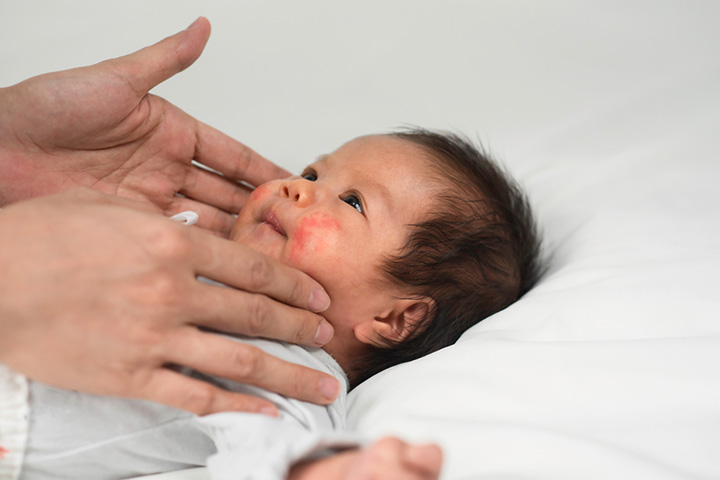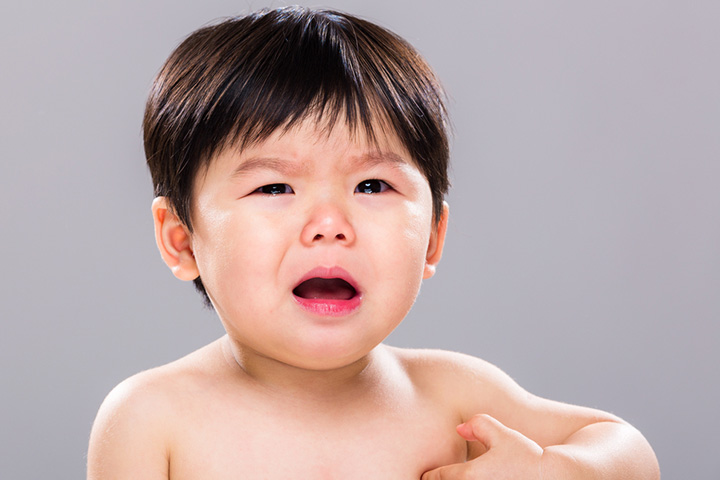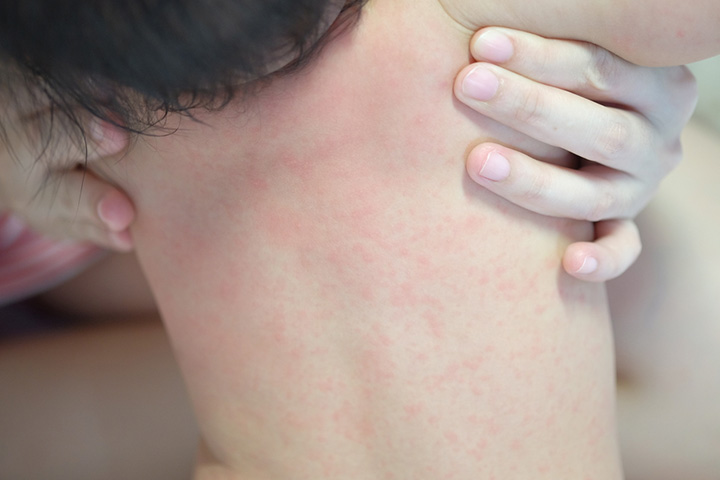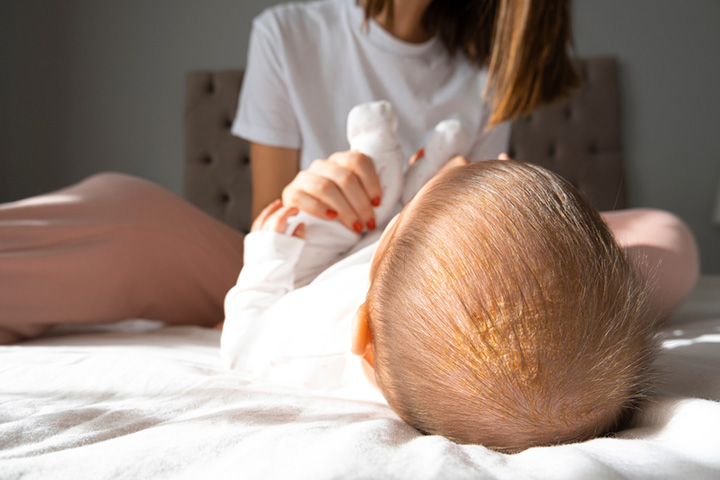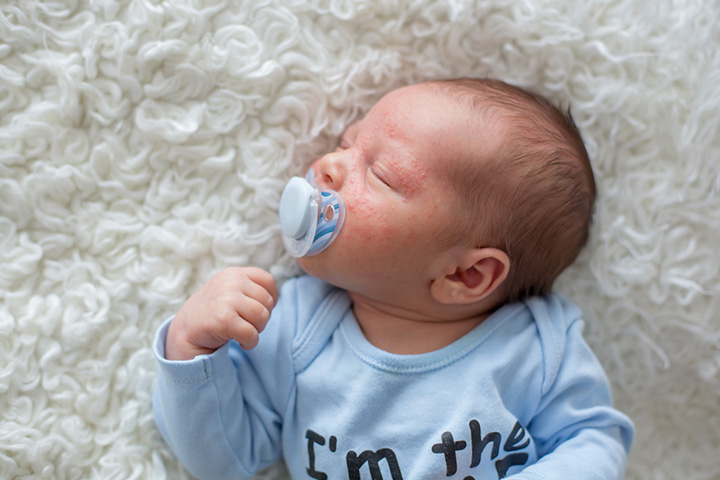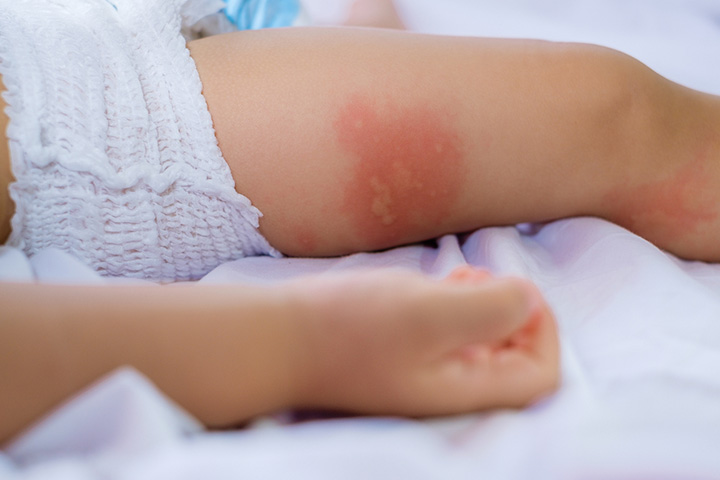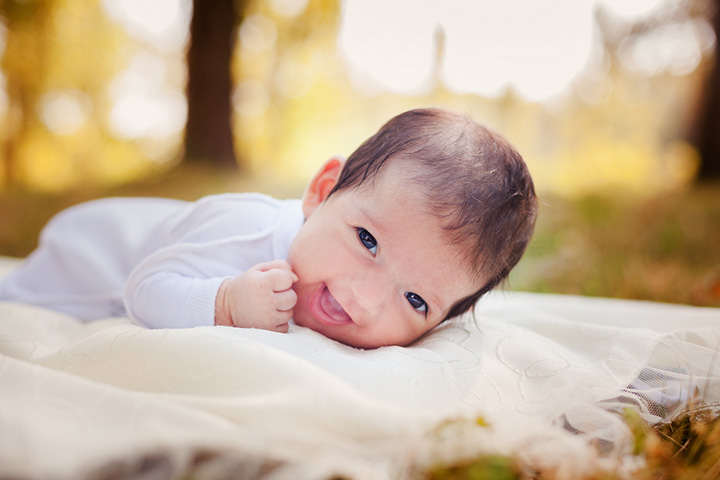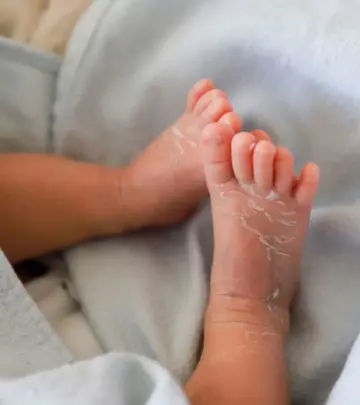
Image: Shutterstock
Every parent wishes the best for their little one, but there are things that will happen to your baby even under your best care and protection. Baby skin is delicate and sensitive, and the slightest change can make them bruise like a peach. If you are new to baby skincare, common problems like diaper rash and heat rash can make you nervous. So before you dial your doctor or run to the nearest clinic with your baby, we have something to help you out. Here is a complete list of common skin problems in infants and simple ways to cure them. Go on and read them all.
1. Baby Acne
Image: Shutterstock
Baby acne looks like adult acne and is a red bump with a white head. It appears on the face and mostly is the doings of hormones. You can fight it by keeping your baby’s skin free of clogged pores. Use a gentle soap for regular baths, and make sure you don’t apply a thick moisturizer. If the acne persists for more than three months, it’s better to check with your pediatrician.
2. Intertrigo
Image: Shutterstock
Intertrigo looks like a red patch of skin that mainly occurs in the folded skin (1). It is the result of trapped moisture in the creases of the body. It can further irritate your skin by the constant rubbing motions. Do not use excess powder on your baby’s skin. It absorbs moisture and keeps it trapped in the skin. You can try a zinc-based ointment to soothe the rash (2). If the infection increases, you can get it checked with your doctor. The best way to avoid it is to dry your baby entirely after a bath and wipe them every time they sweat.
3. Prickly Heat
Image: Shutterstock
Prickly heat looks like tiny red bumps on the skin. It appears mainly on the parts of the body that are covered with clothing. It is prevalent in tropical countries. Get loose cotton clothes and change the clothing when your baby sweats. Also, make sure they drink ample water to be able to regulate the temperature.
4. Seborrhea
Image: Shutterstock
Seborrhea looks like a cradle cap and gives off a red and itchy scalp with dandruff (3). It is mainly caused by yeast-like organisms, but the definite cause is yet to be known. It goes away in six months, andt can be treated with regular shampooing and brushing off.
5. Hand, Foot And Mouth Disease
Image: Shutterstock
This virus is contagious and spreads through contact. It develops on the soles, palms, or mouth of your baby (4). The early symptoms are sore throat and low-grade fever. There is no such treatment for the virus, but painkillers ease the discomfort and it should clear on their own within 10 days.
6. Hives
Image: Shutterstock
Hives mostly appear as itchy red raised bumps on the skin (5). They indicate the allergic reaction to a substance. It can be things like detergent, pet food, or other foods. They can also be an autoimmune response when none of the allergens are present. It is the immune system that triggers an allergic attack.
Most hives can be treated through oral antihistamines (6). If the baby does not respond to the medicine, it could be an autoimmune disease. This is when your doctor will recommend steroids or immunosuppressive medication.
7. Poison Ivy
Image: Shutterstock
If you are allergic to poison ivy, it’s best to keep your child at a safe distance from the plant. For the first aid, wash off the contacted area and apply a soothing calamine lotion. Any signs of breathing difficulty and swollen eyelids call for immediate medical attention.
How To Protect Your Baby From Allergies?
Baby’s skin is most sensitive, and a simple rash can appear like a cumbersome disease. You need to stay calm and identify the cause of the allergy as fast as possible. Keep some anti-allergic medicines and ointments ready, so you can soothe the skin before medical attention can be given to your child. Here are a few ways to ensure the allergies don’t reach your child.
1. Keep Them Away From The Sun
Image: Shutterstock
Limit your child’s time out in the direct sun. Even though vitamin D is necessary, it should not burn their skin.
2. Take Care Of Dry Skin
Moisturizer may not be necessary for all infants. It is common for the baby to develop little patches of dry skin. Frequently, these patches will disappear independently, without the need for additional moisturizing products.
3. Don’t Worry About The Cradle Cap
Image: Shutterstock
Cradle cap is a common skin condition that affects babies between three weeks and three months. It is characterized by yellowish, greasy-looking plaques on the scalp and crown of your baby’s head. Cradle caps can also appear on the forehead, eyebrows, and around the ear lobes in infants.
The best way to keep your baby safe from skin rashes and infections is to make sure the allergens are away from your child. Make sure any food, plant, or even pet that may trigger the rashes are at a safe distance from your baby till they are strong enough to fight the allergens. So, do you have any expert hacks to keep your baby’s skin soft, nourished and protected? Let us know in the comments section.

